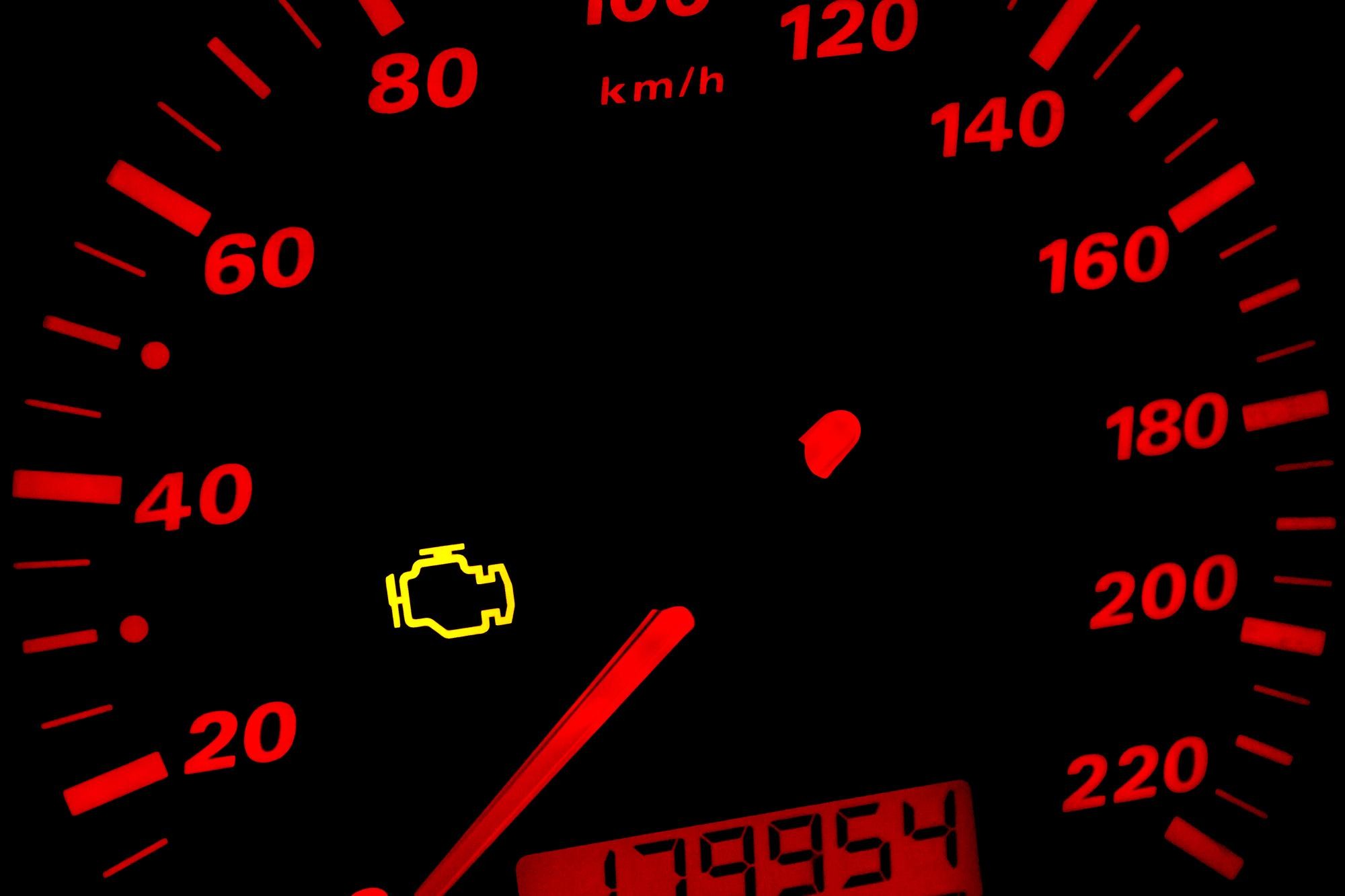It’s a moment every driver dreads: the sudden appearance of that little engine symbol illuminating on your dashboard. The Check Engine Light. But what does it mean, especially when it’s yellow? While a lit Check Engine Light invariably signals an issue with your vehicle’s engine or related systems, the specific meaning and the urgency of the problem can differ based on the light’s color and behavior – is it solid or flashing? Vehicle manufacturers also employ varied alert systems, making it crucial to understand what your car is specifically trying to communicate.
Your owner’s manual is the ultimate guide for deciphering your car’s signals. However, let’s explore some typical reasons behind a yellow Check Engine Light illuminating on your dashboard.
Understanding a Yellow Check Engine Light: Is it Serious?
 Car dashboard with yellow check engine light illuminated
Car dashboard with yellow check engine light illuminated
The good news is that a steady yellow Check Engine Light typically indicates a non-urgent issue. It’s not a signal to immediately pull over or panic. However, ignoring it isn’t advisable either. Think of it as your car politely suggesting a check-up rather than screaming for emergency help. You should schedule a visit to a trusted mechanic at your earliest convenience for diagnostics and trouble code analysis. Even seemingly minor issues can escalate into significant problems if neglected for too long.
Conversely, a blinking or red Check Engine Light is a serious warning. This indicates a more critical engine problem demanding immediate attention. In such cases, prompt inspection by a qualified mechanic is crucial to prevent further damage and ensure your safety.
Common Culprits Behind a Yellow Check Engine Light
Seeing a yellow Check Engine Light can be unsettling, but understanding the common causes can alleviate some worry. Often, the issue is relatively straightforward to address, potentially even something you can resolve yourself, or a minor repair easily handled by a mechanic. Let’s examine three frequent reasons for that yellow light.
1. The Simple Gas Cap Issue
Did you recently refuel your vehicle? A surprisingly common cause for a yellow Check Engine Light is a loose or improperly sealed gas cap. If the gas cap isn’t tightened correctly, fuel vapors can escape from the fuel tank instead of being properly routed through the vehicle’s fuel system.
The fix might be as simple as ensuring your gas cap is securely tightened. When you next park your car, double-check the gas cap. If the yellow Check Engine Light extinguishes after a few driving cycles, a loose gas cap was likely the culprit. However, if the light persists, it’s time to investigate other possibilities.
While tightening the cap, also inspect its condition. A cracked or worn gas cap seal can also trigger the light. If the cap appears damaged, replacing it might resolve the Check Engine Light issue.
2. Spark Plug Problems and Engine Misfires
Experiencing sudden jerking or hesitation while driving? This could signal engine misfires, often linked to worn or failing spark plugs. Spark plugs are vital components responsible for igniting the air-fuel mixture within your engine cylinders at precisely the right moment. As spark plugs age and deteriorate, they can cause combustion to occur at incorrect times or result in incomplete combustion. This leads to noticeable engine misfires, particularly when accelerating.
Spark plug lifespan varies, but generally, replacement is recommended every 30,000 to 50,000 miles. However, certain types of spark plugs can last significantly longer, up to 150,000 miles. Consult your vehicle’s owner manual for specific spark plug replacement intervals.
3. Sensor Issues: Oxygen and Mass Air Flow
Is your car sluggish to accelerate? Weak acceleration coupled with a yellow Check Engine Light often points towards faulty oxygen sensors or mass airflow sensors. These sensors are integral to your engine’s management system. Working in conjunction with the engine control module (ECM), they monitor and regulate the air-fuel mixture entering the engine cylinders. When these sensors become contaminated or begin to fail, they can provide inaccurate readings, potentially leading to an improper fuel mixture being delivered to the engine.
Oxygen and mass airflow sensors typically have a lifespan of 60,000 to 90,000 miles or more, influenced by factors like driving conditions and vehicle maintenance. If you suspect sensor issues based on symptoms like poor acceleration and a yellow Check Engine Light, prompt replacement is essential for optimal engine performance and fuel efficiency.
Need Expert Help with Your Check Engine Light?
If your yellow Check Engine Light has you concerned, or if it’s accompanied by performance issues, seeking professional diagnosis is the best course of action. Qualified mechanics possess the expertise and diagnostic tools to accurately pinpoint the cause of the illuminated light and perform the necessary repairs. Don’t hesitate to consult a trusted automotive service professional to address your Check Engine Light concerns and keep your vehicle running smoothly.
